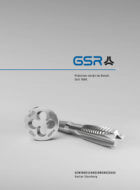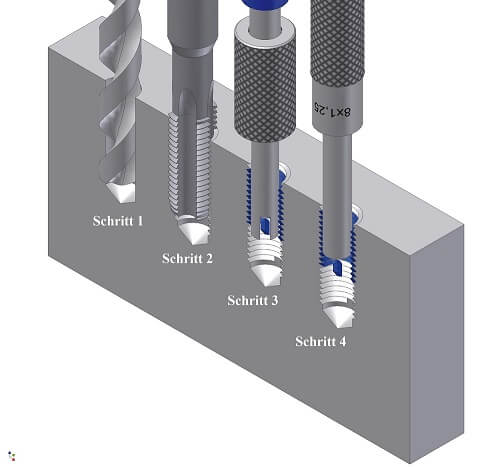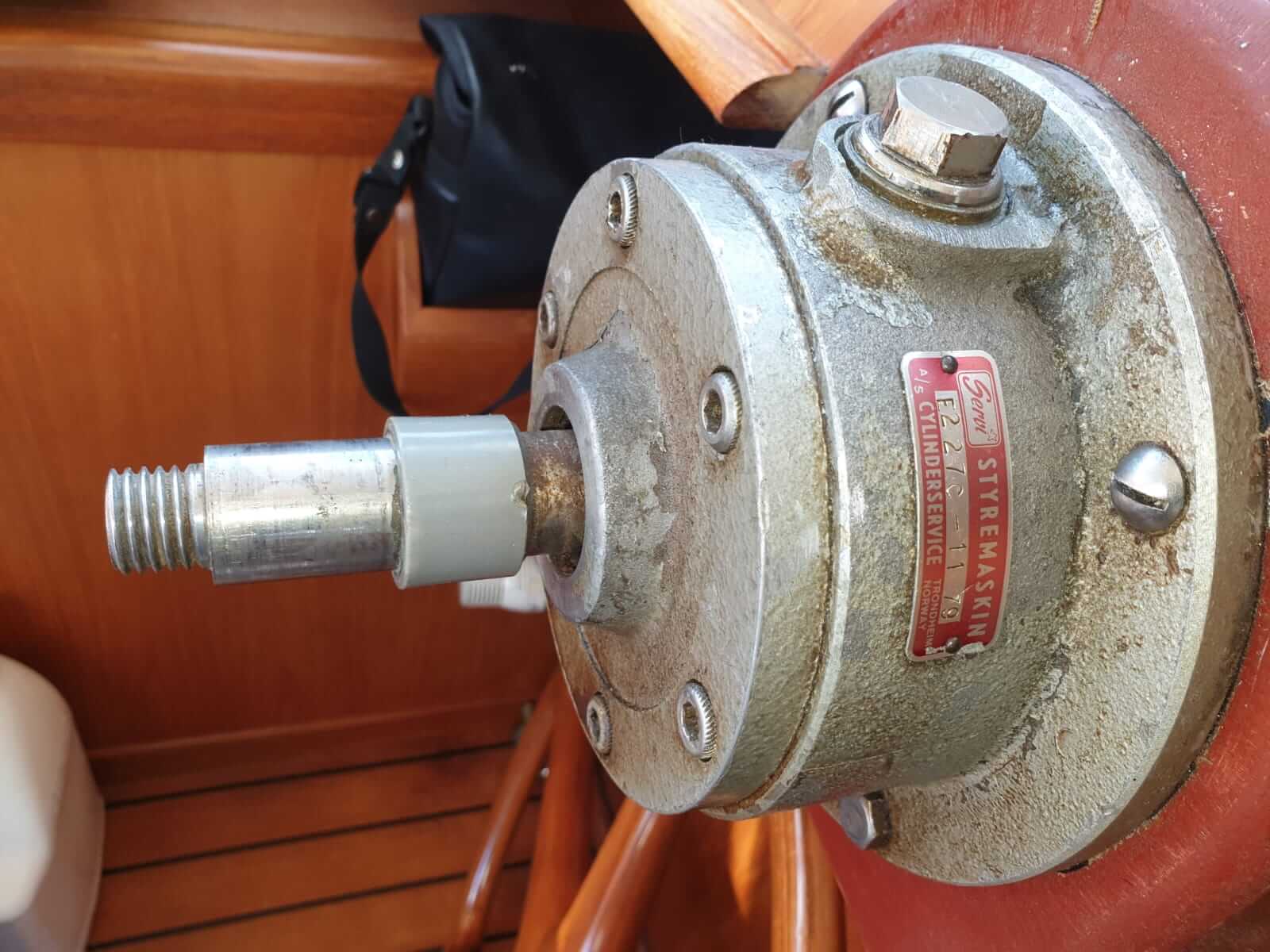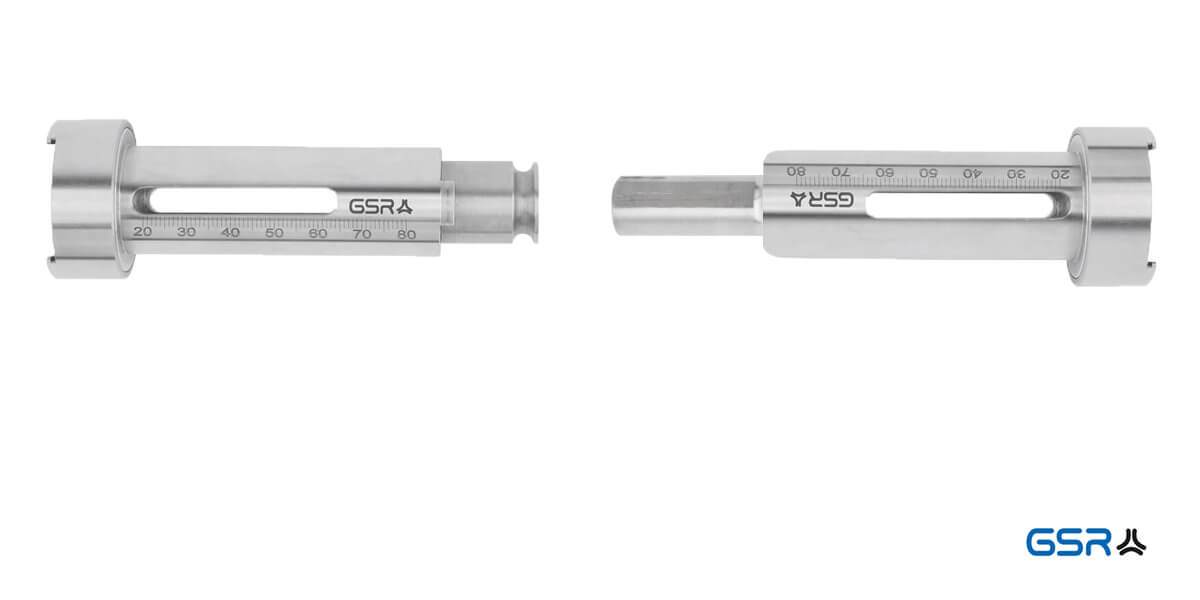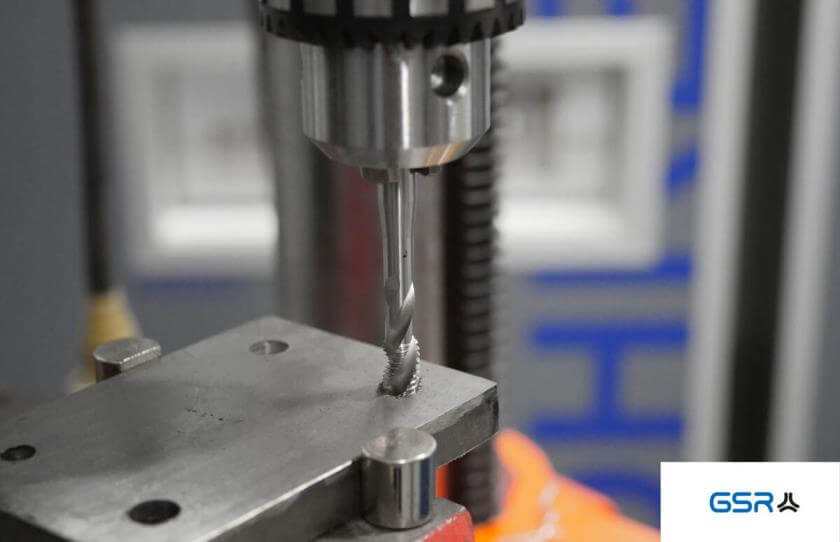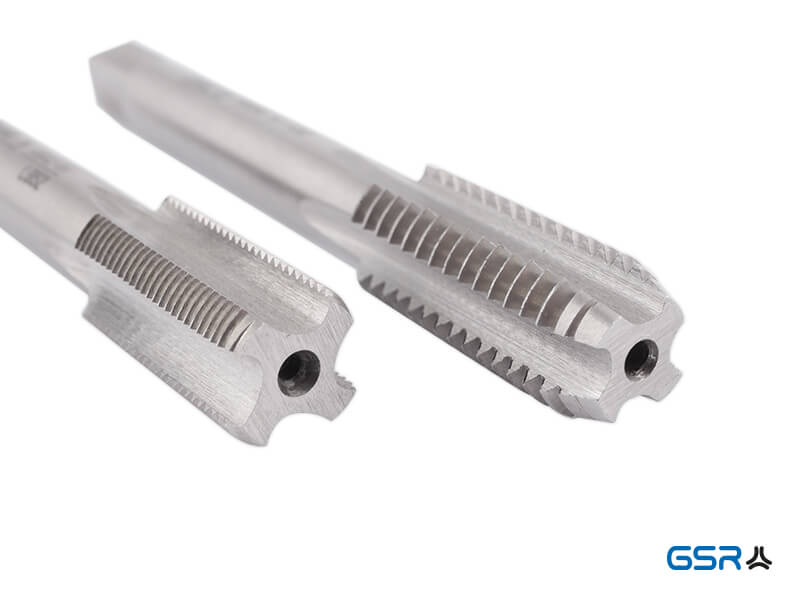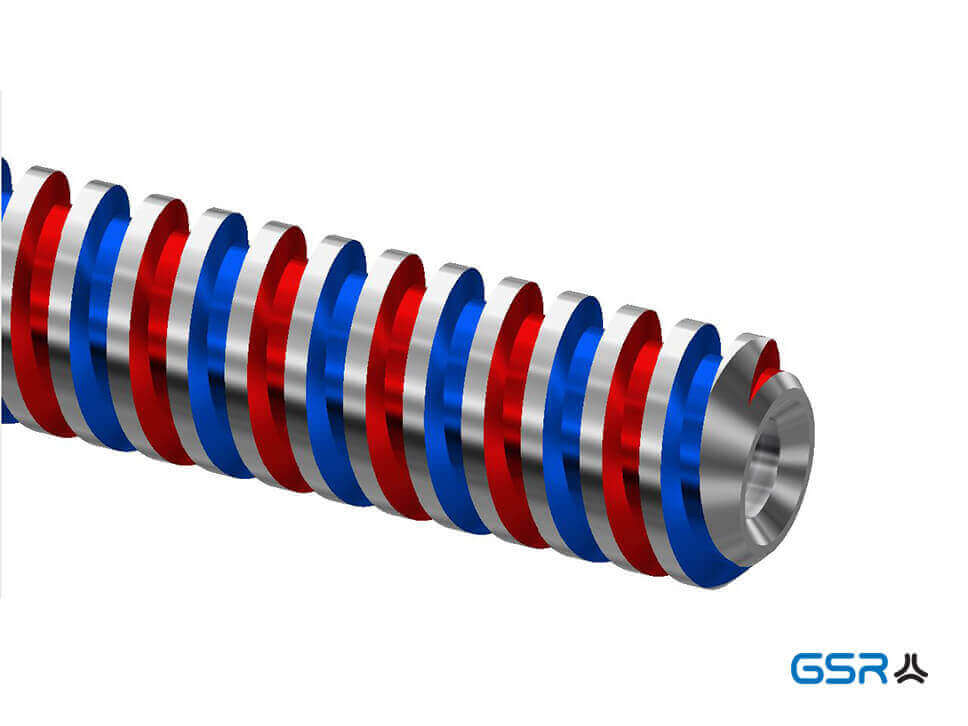Tapping chucks: Adjustable or with quick-change inserts?
In today’s article we would like to go into more detail about the different tapping chucks. You will get an answer to the following questions: What is a tapping chuck? How does a tapping chuck actually work? What is a quick-change insert? What are the differences between an adjustable tapping chuck and a quick-change insert? How are they used? Let’s go!

Why do you need a tapping chuck
Tapping chucks are adapters for stationary drilling machines. They enable, for example, drilling with tools with square taper. Tools are fixed and centred by the tapping chuck.
Fixation
The central part of the adapter are the components for fixing the tool. On a threaded bolt, in which a left-hand thread is cut on one side and a right-hand thread on the other, a cylindrical jaw is screwed on from each side. Two screws (springs) project from the main body of the tool into the fixing cavity. These serve as guide points for the grooves milled in the jaws. This mechanism causes the jaws to move evenly towards or away from each other when the threaded rod is turned. In this way, two opposite sides of the square socket of the tool to be clamped are centrally fixed against rotation around their own axis.
The threaded bolt does not run centrally through the fixing jaws, but above their centre, so that there is a larger contact surface between the tool holder and the jaws.
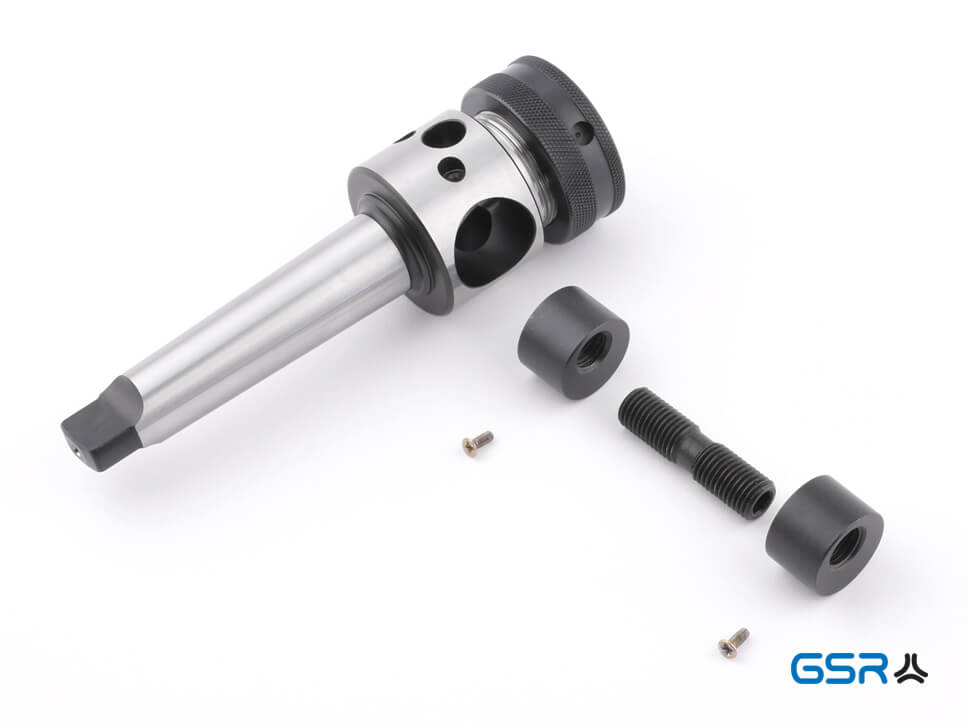
Centring
In the lowest part of the adapter there are three jaws aligned with each other. They enclose the shank of the tool. When tightening with a spanner, the three jaws move towards each other until they have centrally enclosed the shank.
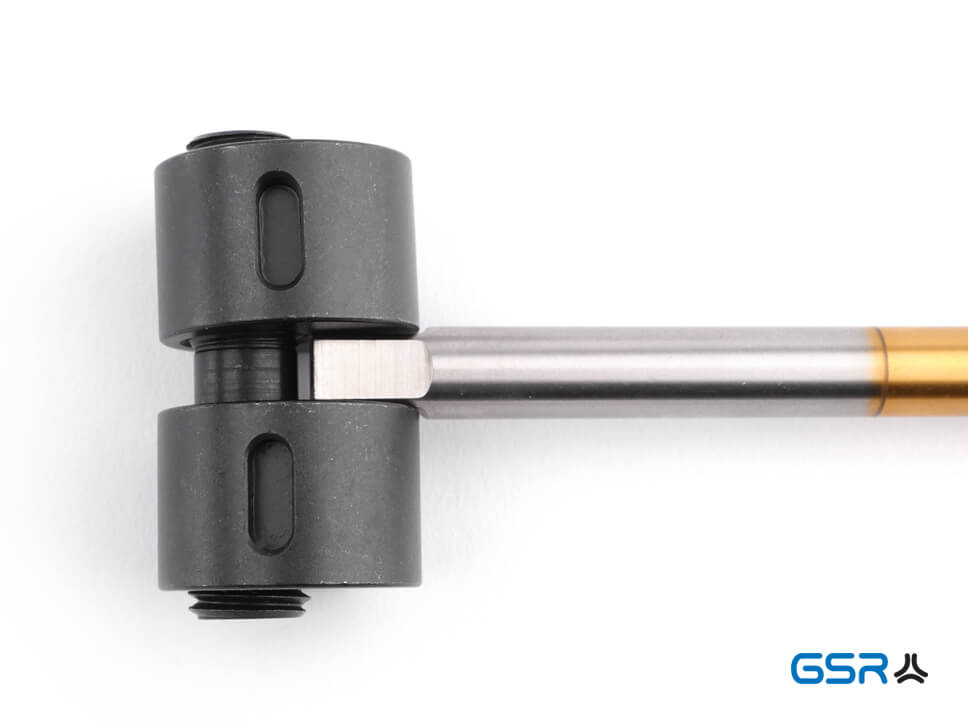
Power transmission
The power transmission from drill to tap holder is effected via the Morse taper by static friction. With this type of power transmission, adhesion is achieved solely by the precise fit of two surfaces on top of each other. The Morse taper can either be clamped in the drill (tap chuck without holder required) or be part of the tap chuck (tap chuck with holder required).
Further Variation
Since the mechanism explained above allows high precision but changing a tool is time-consuming, there is also another variant of the tap holder. This is the tapping chuck with a holder for quick-change inserts. But more about this in the section: Quick-change tapping chucks
Difference: Tapping chuck and quick-change tapping chuck
As we already described at the beginning of this article, it is always useful to use a tapping chuck when tapping a thread with a pillar or upright drill. For simple chucks without automatic return, a basic distinction is made between adjustable tapping chucks and quick-change tapping chucks.

Adjustable tapping chuck
With the adjustable tapping chucks all taps from M3 – M12 can be clamped. The taps are centered in the front area. Then the fixing is tightened with an Allen key at the height of the square and the tap is secured against turning. Tools with a cylindrical shank such as twist drills can also be clamped in the anterior centering. There are variants with fixed Morse taper (e.g. MK 4) or for taper mandrel holders. The advantage is obvious: You need a chuck for all sizes from M3 – M12 and can additionally clamp twist drills from 4 mm to 12 mm.
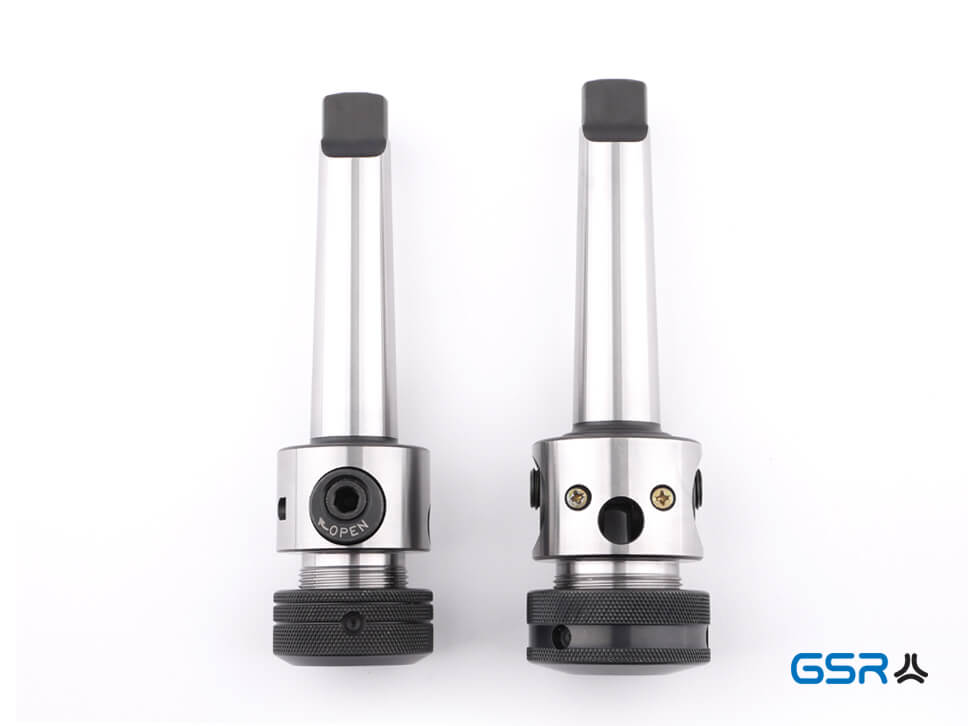
Quick-change tapping chuck
In the case of tapping chucks for quick-change inserts, the connection to the machine is also made by means of corresponding taper mandrel holders. There is a fundamental difference in the location of the tapping tools: For each square size you need a separate quick-change insert. For this you have the possibility to change between the individual sizes very quickly. The prepared quick-change inserts are then exchanged with a click.
In addition: The quick-change inserts are equipped with overload protection by the customer. If the torque becomes too high, the chuck disengages. This prevents tool breakage. The chuck is set at the factory. Depending on the operating conditions, it may be necessary to adjust the triggering torque. This mainly depends on the working environment (e.g. coolant supply) or the material of the workpiece

You prefer to cut your thread quickly and mobile, i.e. with a cordless screwdriver and not with a drill press? Find out more about our e-Tapping solution for sanitary, heating and air conditioning systems in outdoor applications. Click here for the blog post:
Thread QC Adapter e-Tapping with hexagonal shaft for cordless screwdrivers
Click here to go to the shop: QC-Adapter and SC-Adpater e-Tapping solutions for SHK (sanitary, heating and air conditioning)
Conclusion
When tapping with box column drills, we recommend tapping chucks with Morse taper. If you change back and forth between sizes very often, you are better off with the quick-change inserts. Otherwise an adjustable chuck is sufficient. If you need to be quick and mobile, the e-Tapping series is recommended.
One more note: Your drill must have clockwise and counter-clockwise rotation, otherwise they are not suitable for threading.
Info: The Morse taper is named after the US-American Stephen A. Morse. He invented the Morse taper in 1864.
Info: The taper arbor with drill chuck taper is standardized in DIN 238. On the drive side there is a Morse taper (optionally MK 1-5) with drive lobes, on the other side there is a tool clamping head designed as a taper in nominal dimension B (B 10 – B 24).
Info: If necessary, a twist drill can also be clamped with the aid of the quick-change inserts.
The fixation in the drill chuck is additionally strengthened by the three jaws.
In order to optimize the process now, 2 quick-change inserts can be used. In one of the quick-change inserts you would clamp the appropriate drill bit and in the second one the tap. This way, the cutting tools can be exchanged with a click and one saves having to re-align the thread cutting machine.
You need tapping chucks?
Further information and offers are available on request or in the shop.
Please write to us at info@gsr-germany.de or simply give us a call: +49 21 91 – 58 33
Save 30% discount on the product launch!






